Israel – Day Seven
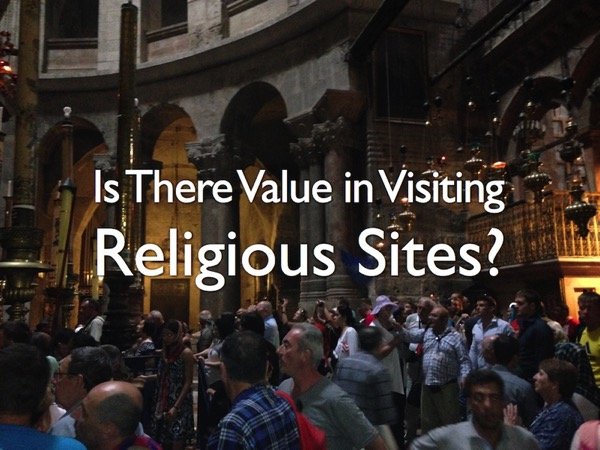
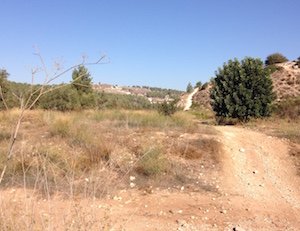 We visited quite a range of sites today. We went into the Judean mountains west of Jerusalem and located the Valley of Elah where David fought Goliath. We walked along the stream bed (it is dry this time of year) where he picked out five smooth stones and we found our own as keepsakes.
We visited quite a range of sites today. We went into the Judean mountains west of Jerusalem and located the Valley of Elah where David fought Goliath. We walked along the stream bed (it is dry this time of year) where he picked out five smooth stones and we found our own as keepsakes.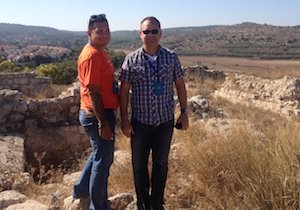 We then visited Beit Shemesh, which was Delilah's hometown. It is mentioned a number of times in the Old Testament because it was a border city occupied by Philistines and the site of numerous battles from Judges through 2 Kings.F
We then visited Beit Shemesh, which was Delilah's hometown. It is mentioned a number of times in the Old Testament because it was a border city occupied by Philistines and the site of numerous battles from Judges through 2 Kings.F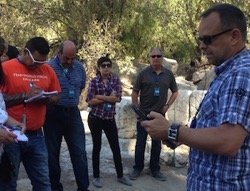 rom there we went to Emmaus. Here, we read together the Luke 24 account of Jesus, after his resurrection, walking and talking with two of his disciples and then eating with them. It was in this passage when he told them that the prophets had foretold that the Messiah would suffer and die and that he fulfilled that, so that they would spread the news of forgiveness that he offers to the world. There were ruins from 5th century Christians living there, including a church and an immersion baptistry.We also went to the Valley of Aijalon (or Ayalon Valley) where Joshua prayed and asked God to keep the sun from setting so that the Israelites would have enough time to defeat the Amorites before they would be able to regroup overnight. It was one of the most fantastic miracles of the Old Testament.We then went into Jerusalem to visit the Church of the Holy Sepulcher. All I can say is, “Wow!” And I don’t really mean that in a good way.
rom there we went to Emmaus. Here, we read together the Luke 24 account of Jesus, after his resurrection, walking and talking with two of his disciples and then eating with them. It was in this passage when he told them that the prophets had foretold that the Messiah would suffer and die and that he fulfilled that, so that they would spread the news of forgiveness that he offers to the world. There were ruins from 5th century Christians living there, including a church and an immersion baptistry.We also went to the Valley of Aijalon (or Ayalon Valley) where Joshua prayed and asked God to keep the sun from setting so that the Israelites would have enough time to defeat the Amorites before they would be able to regroup overnight. It was one of the most fantastic miracles of the Old Testament.We then went into Jerusalem to visit the Church of the Holy Sepulcher. All I can say is, “Wow!” And I don’t really mean that in a good way.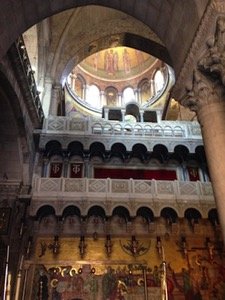 This church, or conglomeration of churches of several different catholic and orthodox denominations, was an example of religious opulence as a facade to what Jesus called “true worship” (John 4:24). The place was packed from wall to wall with people pushing and shoving to get to a “holy place” where they would weep and attempt to touch an object viewed as holy.
This church, or conglomeration of churches of several different catholic and orthodox denominations, was an example of religious opulence as a facade to what Jesus called “true worship” (John 4:24). The place was packed from wall to wall with people pushing and shoving to get to a “holy place” where they would weep and attempt to touch an object viewed as holy. 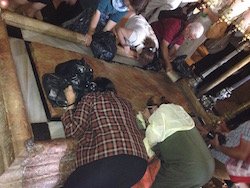 The denominations that control portions of the site are at odds with each other and are so unable to get along that a Muslim is charged with keeping the peace and he alone holds the key to the door that lets church leaders inside. You cannot see anything because it is all covered with symbols and chandeliers and carvings. The place they claim to be Calvary is hidden behind a wall with a small window that people have to line up for hours to be able to peer into and see (I accidentally went the wrong way and found myself in front of it in a matter of minutes). The place where the empty tomb is supposed to be located is hidden in a boxed room and again, in order to get a small glimpse into it, you have to wait in line for hours. I didn’t.Is there any value in this? Is that why Jesus hung on a cross? Is that the life that he promises with his resurrection?
The denominations that control portions of the site are at odds with each other and are so unable to get along that a Muslim is charged with keeping the peace and he alone holds the key to the door that lets church leaders inside. You cannot see anything because it is all covered with symbols and chandeliers and carvings. The place they claim to be Calvary is hidden behind a wall with a small window that people have to line up for hours to be able to peer into and see (I accidentally went the wrong way and found myself in front of it in a matter of minutes). The place where the empty tomb is supposed to be located is hidden in a boxed room and again, in order to get a small glimpse into it, you have to wait in line for hours. I didn’t.Is there any value in this? Is that why Jesus hung on a cross? Is that the life that he promises with his resurrection?
Jesus never told us to build shrines, he told us to remember.
Here’s the problem…because we so struggle with spiritual concepts, our weak faith leads us to demanding something tangible to devote ourselves to. People want objects to worship, rather than to see God through eyes of faith and believing him for what is revealed in Scripture. And so people want to build places, consecrate icons and sacred sites, to focus their attention. But God wants us to come to him apart from the frills and embellishments. Jesus never told us to build shrines, he told us to remember him and trust him. The only ritual he gave us was a simple meal of bread and wine that symbolize his body and blood. That’s it.So is there any value in visiting religious sites?Not if it’s done to gain God’s favor. Not if it’s done for “religious” reasons. Not if you are looking for a “magical” experience.This tour of Israel, however, has been one of the most valuable experiences of my life. But for me, it has brought my understanding of the Bible to life. I can see what Jesus saw when he sailed on the Sea of Galilee. I could walk the path that he did from the synagogue in Capernaum to his friend Peter’s house, and then down to the lake. I can take in the view he had from the Mount of Olives and Gethsemane. The history of the Bible and the stories of Jesus' life take on a greater sense of reality. And you know what, they become more “every day” to me.But the extravagant religious ornamentation actually take the realness out of it and moves it back into a realm of fictitious religiosity.What it comes down to is this: Christianity is so much more than a religion. Extravagance and ritualism cheapens its essence. Jesus was and is a person. A real person who walked in real places and did real things. He offered himself as a sacrifice to save real people, and rose again from the dead to give real life. You don’t have to come to the “Holy Land” to experience that. This is my first time here and I’ve been blessed with it for thirty-five years!Coming here has helped my understanding of the Bible come alive. I’d love it if you came with me next year.